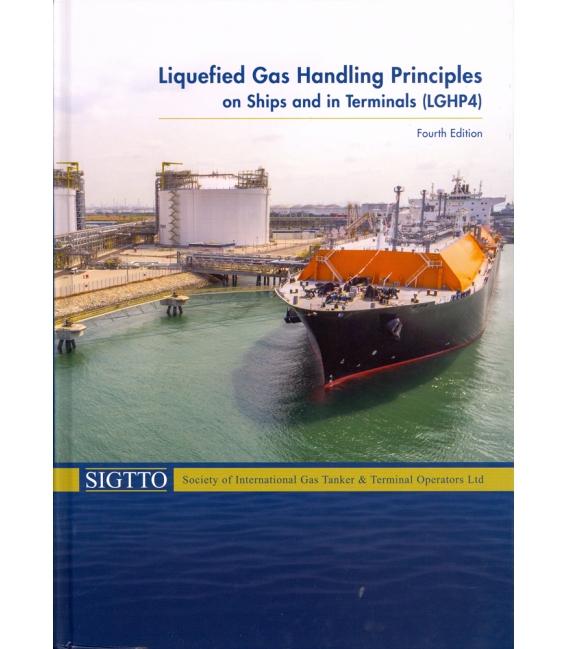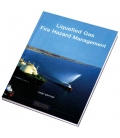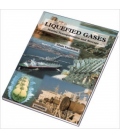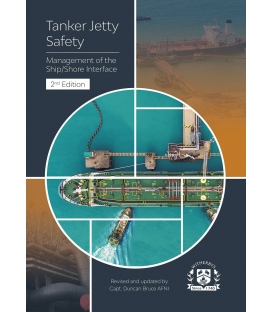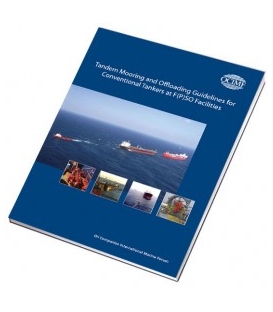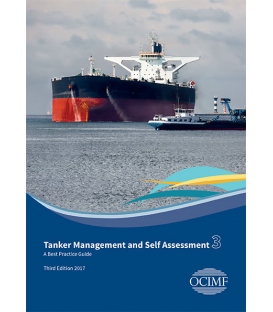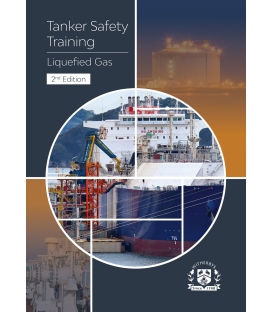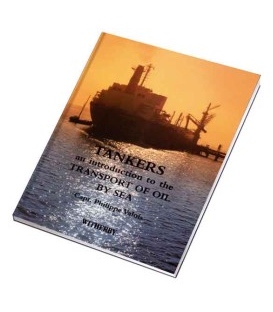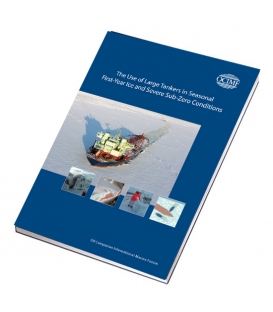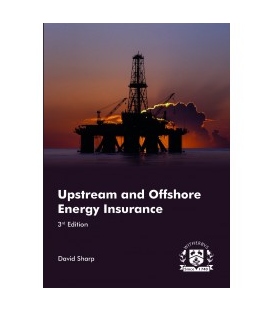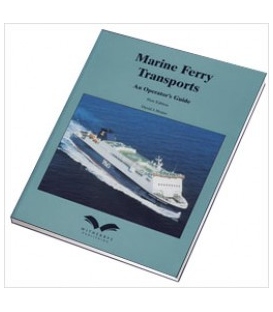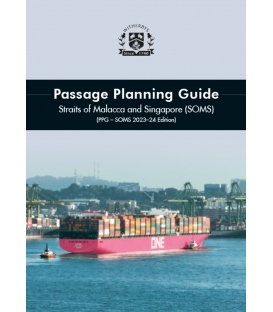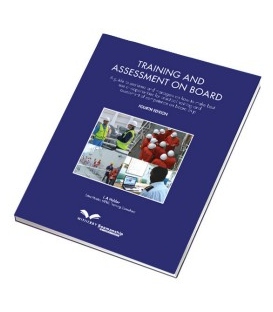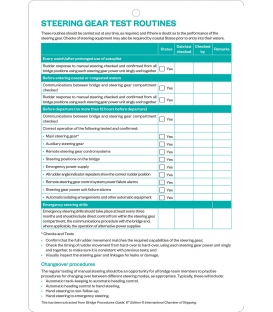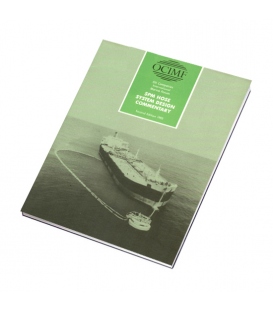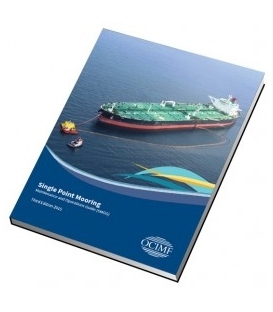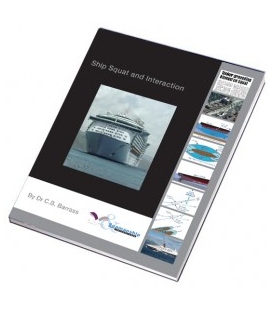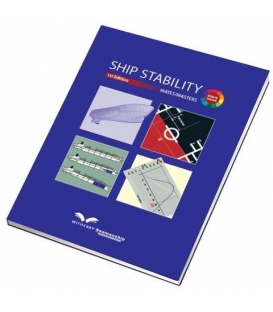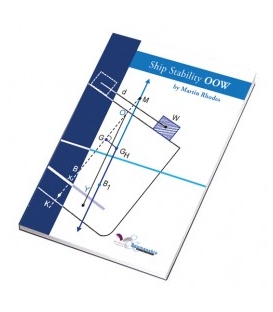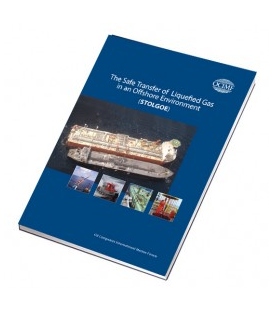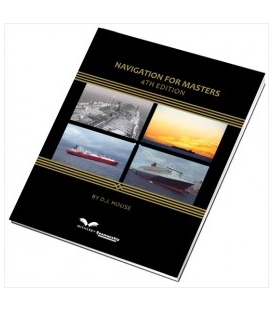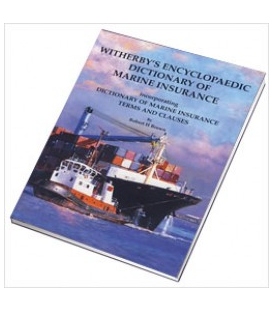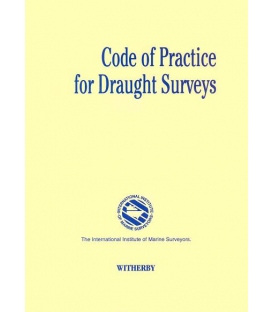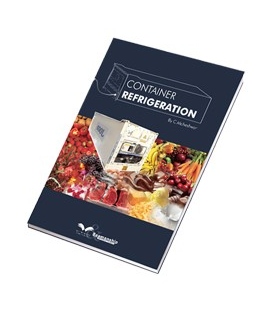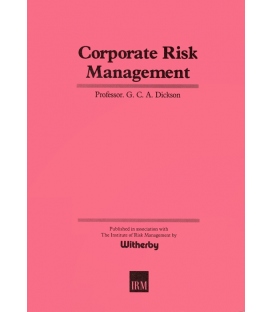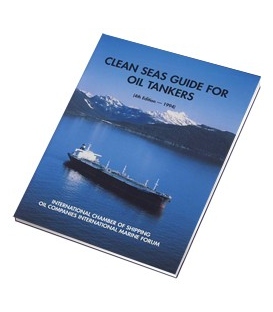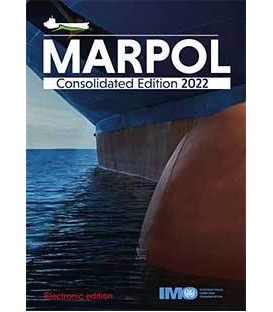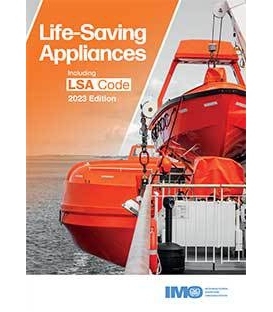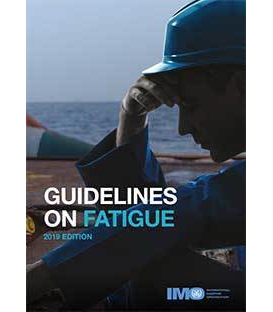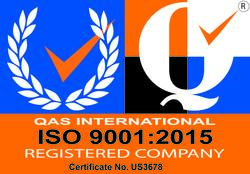

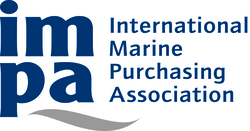
Sign up for our Newsletter
Liquefied Gas Handling Principles on Ships and in Terminals, (LGHP4) 4th Edition, 2016
Title: Liquefied Gas Handling Principles on Ships and in Terminals, (LGHP4) 4th Edition
Edition: Fourth
Number of Pages: 568
Product Code: WS1454K
ISBN 13: 978-1-85609-714-7 (9781856097147), ISBN 10: 1-85609-714-5 (1856097145)
Published Date: July 2016
Binding Format: Hardback
Author: SIGTTO
Liquefied Gas Handling Principles on Ships and in Terminals, (LGHP4) 4th Edition, 2016
This fully illustrated 500-page reference book covers every aspect of the safe handling of bulk liquid gases (LNG, LPG and chemical gases) on board ships and at the ship/shore interface at terminals. It is indispensable for personnel training for operational qualifications as well as those already engaged in liquefied gas operations.
The publication has been written primarily for serving ships’ officers and terminal staff who are responsible for cargo handling operations, but also for personnel who are about to be placed in positions of responsibility for these operations. Its appeal extends also to many others, not directly involved in the operational aspects of the industry, who require a comprehensive and ready reference for technical aspects of their businesses. Liquefied Gas Handling Principles emphasises the importance of understanding the physical properties of gases in relation to the practical operation of gas-handling equipment on ships and at terminals.
In the sixteen years since this publication was last updated, the liquefied gas shipping and terminal industry has undergone considerable change. This revision reflects these changes which include, but are not limited to, vessel design, propulsion systems, size of fleet, floating regasification and reliquefaction, Arctic LNG, containment systems, efficiency increases in vessel operations, vessel capacities, technology, best practice and legislation.
Contents
Preface to the Fourth Edition
Prefaces to the Previous Editions
Figures and Tables
Definitions
Key to Symbols
CHAPTER 1 Overview of the Carriage of Liquefied Gases by Sea
|
1.1 |
The Liquefied Gases |
|
|
1.1.1 LNG production |
|
|
1.1.2 LPG production |
|
|
1.1.3 Chemical gases production |
|
1.2 |
The Principal Products |
|
1.3 |
Gas Carrier Fleet |
|
1.4 |
Safety Record |
|
1.5 |
Regulatory Framework |
|
|
1.5.1 Safety of Life at Sea (SOLAS) |
|
|
1.5.2 International Convention for the Prevention of Pollution From Ships, 1973, as modified by the Protocol of 1978 (MARPOL 73/78) |
|
|
1.5.3 International Convention on Standards of Training, Certification and Watchkeeping for Seafarers (STCW) |
|
|
1.5.4 Recommendations on the Safe Transport of Dangerous Cargoes and Related Activities in Port Areas |
|
|
1.5.5 Ship certification |
CHAPTER 2 Properties of Liquefied Gases
Chapter 2 Part a) The Chemistry of Liquefied Gases
-
Atoms, Molecules and Chemical Bonds
-
The hydrocarbon series
-
Chemical formulae and the IUPAC naming system
-
Saturated and unsaturated hydrocarbons 24
-
-
The Chemical Gases 28
-
Chemical Reactivity and Compatibility 31
-
Reactivity with construction materials 31
-
Reactivity with other cargoes 32
-
-
Self-Reaction 33
-
Reactive properties 33
-
Formation of polymers or dimers 33
-
-
Reaction with Water – Hydrate Formation 37
-
Reaction with Air 39
-
Combustion 39
-
Flammability/flammable range 40
-
-
Suppression of Flammability 44
-
Inert gas and nitrogen 45
-
The use of inert gas 46
-
The chemical compatibility of cargoes with inert gas or nitrogen 47
-
-
Chapter 2 Part b) The Physics of Liquefied Gases 49
-
The Physical Properties of Liquefied Gases and their States of Matter 49
-
Temperature, heat energy and phase change 49
-
Specific heat, enthalpy and entropy 50
-
Phase change – a summary 51
-
Saturated vapour pressure (SVP) 52
-
Liquid and vapour densities 55
-
Liquid to vapour volume ratios 55
-
Spillage of cargo liquid 56
-
Viscosity of liquid cargoes 57
-
-
Chapter 2 Part c) Gas Laws, Thermodynamic Principles and Reliquefaction 59
-
The Gas Laws and Thermodynamic Principles 59
-
Liquefied gas mixtures, their vapour pressures and compositions 62
-
The ‘bubble point’ and ‘dew point’ of mixtures 64
-
The laws of thermodynamics 66
-
Enthalpy and Mollier charts 67
-
Thermodynamic systems – isothermal, isentropic and adiabatic processes 70
-
Heat transfer 71
-
Practical examples of heat transfer 72
-
Rollover 73
-
-
Reliquefaction 75
-
|
2.10.1 |
Indirect cycle |
76 |
|
2.10.2 |
Direct cycle |
77 |
|
2.10.3 |
Cascade cycle |
84 |
|
2.10.4 |
LNG reliquefaction cycles |
86 |
|
CHAPTER 3 |
Liquefied Gas Carrier Types |
93 |
|
|
Chapter 3 Part a) Gas Carrier Types |
95 |
|
|
3.1 Design Standards and Ship Types |
95 |
|
|
3.1.1 The IGC Code |
95 |
|
|
3.1.2 Factors affecting gas carrier design |
97 |
|
|
3.2 Gas Carrier Types |
98 |
|
|
3.2.1 Fully-pressurised ships |
98 |
|
|
3.2.2 Semi-refrigerated ships |
99 |
|
|
3.2.3 Fully-refrigerated ships |
100 |
|
|
3.2.4 Ethylene/ethane ships |
102 |
|
|
3.2.5 LNG carriers |
103 |
|
|
3.2.6 Regasification vessels (RVs) |
104 |
|
|
3.3 Gas Carrier Layout |
105 |
|
|
3.4 Hazardous Zones |
107 |
|
|
3.4.1 Hazardous area classification |
107 |
|
|
3.4.2 IEC definitions |
108 |
|
|
3.4.3 Zone determination |
109 |
|
|
3.4.4 Ventilation |
109 |
|
|
3.5 Survival Capability |
110 |
|
|
3.6 Surveys and Certification |
111 |
|
|
3.6.1 Certificate of fitness |
111 |
|
|
3.6.2 Carriage of noxious liquid substances (NLS) |
112 |
|
|
Chapter 3 Part b) Cargo Containment Systems |
113 |
|
|
3.7 Materials of Construction and Insulation |
113 |
|
|
3.7.1 Construction materials |
113 |
|
|
3.7.2 Tank insulation |
114 |
|
|
3.8 Cargo Containment Systems |
116 |
|
|
3.8.1 Type A tanks |
118 |
|
|
3.8.2 Type B tanks |
121 |
|
|
3.8.3 Type C tanks (semi-refrigerated) |
125 |
|
|
3.8.4 Type C tanks (fully-pressurised) |
126 |
|
|
3.8.5 Membrane tanks |
126 |
|
|
3.8.6 Semi-membrane containment system |
134 |
|
|
3.8.7 Integral tanks |
134 |
|
Chapter 3 Part c) |
Propulsion System Types |
135 |
|
3.9 Propulsion |
System Types on LNG Carriers |
135 |
|
3.9.1 |
Steam |
137 |
|
3.9.2 |
Dual fuel diesel electric (DFDE) |
139 |
|
3.9.3 |
Slow speed diesel (oil fuel) |
141 |
|
3.9.4 |
Slow speed diesel (gas fuel) |
141 |
CHAPTER 4 The Ship – Cargo Equipment 143
-
Cargo Pipelines and Valves 145
-
Cargo pipelines 145
-
Hazards of cargo line pressure testing 146
-
Cargo manifold reducers 147
-
Cargo valves 149
-
Cargo strainers 152
-
Emergency shutdown (ESD) systems 154
-
Effect of surge pressure should ESD activate 158
-
Relief valves for cargo tanks and pipelines 158
-
Types of pressure relief valves 160
-
-
Cargo Pumps 164
-
Pump performance curves 164
-
Deepwell pumps 167
-
Submerged motor pumps 168
-
Booster pumps 169
-
Ice prevention at cargo pumps 170
-
Emergency cargo pumps 170
-
-
Deck Tanks 172
-
Cargo Heaters 173
-
Direct cargo heaters 174
-
Indirect cargo heaters 176
-
-
Cargo Vaporisers 177
-
Regasification Units 179
-
Closed loop with steam heating 179
-
Combined open/closed loop with seawater and steam heating 179
-
Closed loop with steam heating and intermediate water/glycol loop 180
-
Open loop with seawater heating and intermediate propane loop 180
-
-
|
|
4.7 LPG Reliquefaction Plant and Boil-Off Control |
181 |
|
4.7.1 Cargo compressors and associated equipment |
181 |
|
|
4.7.2 Reciprocating compressors |
182 |
|
|
4.7.3 Screw compressors |
183 |
|
|
4.7.4 Compressor suction liquid separator |
184 |
|
|
4.7.5 Cargo compressor suction gas cooling |
184 |
|
|
4.7.6 Purge gas condenser |
185 |
|
|
4.8 LNG Reliquefaction Plant and Boil-off Control Systems |
186 |
|
|
4.8.1 LNG boil-off and vapour handling systems |
186 |
|
|
4.8.2 LNG compressors (vapour return and fuel gas) |
187 |
|
|
4.8.3 Gas combustion units (GCU) |
188 |
|
|
4.8.4 LNG reliquefaction |
189 |
|
|
4.9 Inert Gas and Nitrogen Systems |
192 |
|
|
4.9.1 Inert gas generators |
193 |
|
|
4.9.2 Nitrogen production on ships |
196 |
|
|
4.9.3 Pure nitrogen from the shore |
197 |
|
|
4.10 Electrical Equipment |
198 |
|
|
4.11 Cargo Instrumentation |
200 |
|
|
4.11.1 Liquid level instrumentation |
200 |
|
|
4.11.2 Magnetic level transmitters |
203 |
|
|
4.11.3 Level alarm and automatic shutdown systems |
205 |
|
|
4.11.4 Pressure and temperature monitoring |
205 |
|
|
4.11.5 Gas detection systems |
206 |
|
|
4.11.6 LNG custody transfer measurement systems (CTMS) |
208 |
|
|
4.11.7 Integrated systems |
208 |
|
|
4.11.8 Calibration |
208 |
|
|
4.12 Ship/Shore Links |
209 |
|
|
CHAPTER 5 |
The Terminal |
211 |
|
|
Chapter 5 Part a) Onshore |
213 |
|
|
5.1 Safe Jetty Designs |
213 |
|
|
5.2 Cargo Transfer Systems |
215 |
|
|
5.2.1 Hoses |
216 |
|
|
5.2.2 Marine loading arms (MLAs) |
217 |
|
|
5.2.3 Vapour return |
223 |
|
|
5.2.4 Insulating flanges |
225 |
-
Shore Storage 226
-
Pressurised storage at ambient temperature 227
-
Storage in semi-pressurised spheres 232
-
Refrigerated storage at atmospheric pressure 233
-
Construction materials and design 239
-
-
Ancillary Equipment 240
-
Pressure relief venting 240
-
Pipelines and valves – engineering standards and surge pressure 240
-
Pumps, compressors and heat exchangers 246
-
-
Instrumentation 252
-
Product metering 252
-
Pressure, temperature and level instrumentation 254
-
-
Chapter 5 Part b) Offshore 255
-
Floating Terminals 256
-
Facility Layout 258
-
Engineering design considerations 260
-
Other considerations 261
-
-
Topsides Production Facilities 264
-
Topsides production facility (LPG specific) 264
-
Topsides production facility (LNG specific) 264
-
Topsides production facility (regas specific) 266
-
-
Product Storage and Offloading 269
-
Cargo containment systems 269
-
-
Mooring Systems 270
-
Cargo Transfer Systems 272
-
Side by side offloading 272
-
Tandem offloading 273
-
Hoses for ship to ship and offshore transfer systems 273
-
Surge considerations for ship to ship and offshore transfer systems 274
-
-
CHAPTER 6 The Ship/Shore Interface 275
-
Supervision and Control 277
-
Design Considerations 278
-
|
6.2.1 |
Jetty operations |
278 |
|
6.2.2 |
The terminal |
279 |
|
6.2.3 |
The ship |
279 |
|
6.3 |
Ship/Shore Compatibility Process (LNG) |
280 |
|
|
6.3.1 Ship and terminal particulars |
280 |
|
|
6.3.2 Mooring arrangements |
280 |
|
|
6.3.3 Ship manifold, shore hose and marine loading arm (MLA) characteristics |
281 |
|
|
6.3.4 Terminal gangway characteristics and ship deck landing configuration |
282 |
|
|
6.3.5 Ship/shore link (SSL) |
283 |
|
|
6.3.6 Other compatibility considerations |
284 |
|
6.4 |
Ship/Shore Compatibility Process (Other Liquefied Gases) |
285 |
|
6.5 |
Communications |
286 |
|
|
6.5.1 Prior to charter |
286 |
|
|
6.5.2 Prior to arrival |
286 |
|
|
6.5.3 Alongside the jetty |
287 |
|
|
6.5.4 Navigation, docking, mooring, meteorological and oceanographic systems |
287 |
|
6.6 |
Discussions Prior to Cargo Transfer |
289 |
|
6.7 |
Ship/Shore Safety Checklist |
291 |
|
6.8 |
Supervision and Control During Cargo Transfer |
293 |
|
|
6.8.1 Joint agreement on readiness for cargo transfer operations |
293 |
|
|
6.8.2 Supervision |
293 |
|
|
6.8.3 Periodic checks during cargo transfer operations |
293 |
|
6.9 |
Operational Considerations |
294 |
|
|
6.9.1 Berthing and mooring |
294 |
|
|
6.9.2 Connection and disconnection of cargo hoses and MLAs |
295 |
|
|
6.9.3 Cargo handling procedures |
296 |
|
|
6.9.4 Cargo surveyors |
297 |
|
|
6.9.5 Gangways and ship security |
297 |
|
|
6.9.6 Bunkering |
298 |
|
|
6.9.7 Work permits |
299 |
|
|
6.9.8 Access to cargo manifold during transfer |
299 |
|
6.10 |
Fire-Fighting and Safety |
300 |
|
6.11 |
Linked Emergency Shutdown (ESD) Systems |
302 |
|
6.12 |
Terminal Booklet – Information and Regulation |
304 |
|
6.13 |
Training |
305 |
CHAPTER 7 Cargo Handling Operations 307
-
Sequence of Operations 309
-
Initial Preparations 311
-
|
|
7.2.1 |
Tank inspection |
311 |
|
7.2.2 |
Drying – cargo system |
311 |
|
|
7.2.3 |
Drying – hold spaces and interbarrier spaces |
313 |
|
|
7.3 |
Changing |
Tank Atmospheres |
314 |
|
|
7.3.1 |
Principles of atmosphere changing |
315 |
|
|
7.3.2 |
Displacement |
315 |
|
|
7.3.3 |
Dilution |
317 |
|
7.4 |
Inerting – |
Before Loading |
319 |
|
|
7.4.1 |
Inerting pipelines and cargo machinery |
320 |
|
7.5 |
7.4.2 Gassing-U |
Tank preparation prior to loading ammonia p |
321 322 |
|
|
7.5.1 |
Gassing-up at sea using liquid from tanks |
323 |
|
|
7.5.2 |
Gassing-up alongside |
324 |
|
7.6 |
Cool-down |
328 |
|
|
7.6.1 |
Refrigerated LPG cargoes |
329 |
|
|
7.6.2 |
LNG |
330 |
|
|
7.6.3 |
Semi-pressurised/semi-refrigerated ships |
331 |
|
7.7 |
Loading |
|
332 |
|
|
7.7.1 |
Preliminary procedures |
332 |
|
|
7.7.2 |
Trim, stability and stress |
333 |
|
|
7.7.3 |
Sloshing |
333 |
|
|
7.7.4 |
Management of tank pressure during loading |
334 |
|
|
7.7.5 |
Commencement of loading |
338 |
|
|
7.7.6 |
Operation of the reliquefaction plant during bulk loading of LPG |
340 |
|
|
7.7.7 |
Operation of the reliquefaction plant during bulk loading of LNG |
341 |
|
|
7.7.8 |
Cargo tank loading limits |
341 |
|
7.8 The Loaded Voyage 345 |
|
7.8.1 |
Cargo temperature and pressure control |
345 |
|
7.8.2 |
Operation of the reliquefaction plant on refrigerated LPG carriers |
346 |
|
7.8.3 |
Operation of the reliquefaction plant on LNG carriers |
348 |
|
7.8.4 |
LNG carriers – gas combustion unit (GCU) |
350 |
|
7.8.5 |
LNG boil-off gas (BOG) as fuel |
351 |
|
7.8.6 |
Other boil-off gas (BOG) as fuel |
352 |
-
Discharging 353
-
Discharge by pressurising the vapour space 353
-
Discharge by cargo pump 353
-
Discharge via booster pump and cargo heater 357
-
Tank pressure management 357
-
Operation of the reliquefaction plant during discharge 361
-
Completion of discharge 361
-
Draining of tanks and pipelines 362
-
-
The Ballast Voyage 364
-
LPG carriers 364
-
LNG carriers 364
-
-
LNG Carrier – Ballast Voyage on Ships Fitted with a Combination
-
of a Reliquefaction Plant/GCU 365
-
Warm ballast voyage (use of GCU) 365
-
Cold ballast voyage (use of reliquefaction plant) 365
-
-
Gas-Freeing 366
3
-
LPG/NH carriers 366
-
LNG carriers 372
-
-
Ship to Ship Transfer (STS) 377
CHAPTER 8 Cargo Measurement and Calculation 379
|
8.1 |
Principles |
for Liquefied Gases |
381 |
|
|
8.1.1 |
Special practices for gas cargoes |
381 |
|
|
8.1.2 |
General – density in air and density in a vacuum |
382 |
|
|
8.1.3 |
Gas-up and cool-down quantity calculation |
386 |
|
|
8.1.4 |
Shore terminal considerations |
387 |
-
Taking Samples of Liquefied Gas Cargoes 389
-
Why cargo samples are taken 389
-
Sampling systems – ‘open loop’ or ‘closed loop’ systems 390
-
The procedures involved in taking samples 393
-
-
Measurement of Cargo Tank Volumes 396
-
Trim correction 397
-
List correction 398
-
Tape correction 398
-
Float correction 398
-
Tank shell contraction and expansion 398
-
-
Measurement of Density 399
-
Density measurement methods 399
-
-
|
8.5 |
Ship/Shore Calculation Procedures |
401 |
|
|
8.5.1 Outline of weight in air calculation |
401 |
|
|
8.5.2 Procedures using standard temperature |
401 |
|
8.6 |
Example – LPG Cargo Calculation |
403 |
|
8.7 |
Other Calculation Procedures and Measurement Units |
404 |
|
8.8 |
LNG Quantification |
405 |
|
|
8.8.1 Example of contractual requirements for the measurement of the energy transferred at an LNG unloading terminal |
410 |
|
8.9 |
Cargo Documentation |
415 |
CHAPTER 9 Health, Environment and Safety Management 417
Chapter 9 Part a) Safety Management 419
-
Safety Management Systems (SMS) 419
-
Security 421
-
Safety Organisation 422
-
Terminal organisational structure 422
-
Shipboard safety organisation 422
-
Training, competency and experience 424
-
-
Chapter 9 Part b) Hazards and Emergency Procedures 425
-
Principal Hazards 425
-
Flammability 426
-
Jet fires 427
-
Liquid (pool) fires 427
-
Vapour cloud explosion 429
-
BLEVE 429
-
Vaporisation of spilled liquid 430
-
Rapid phase transitions (RPT) 430
-
Uncontrolled release of vapour 431
-
Vapour exposure 431
-
Asphyxia (suffocation) 434
-
Medical treatment for asphyxia or the effects of toxic materials 436
-
Giving oxygen to a casualty 438
-
Frostbite 440
-
Chemical burns 442
-
Other hazards of liquefied gases 442
-
-
Emergency Planning 443
-
The emergency plan 443
-
Ship emergency procedures 443
-
Terminal emergency procedures 444
-
-
Removal of Ship from Berth 446
-
Ship to Ship Cargo Transfer 447
-
Hazards with the Use of Hoses and Marine Loading Arms (MLAs) 448
-
Sources of Ignition 450
-
Fire and Fire-Fighting Management 451
-
Extinguishing Mediums 452
-
Water 452
-
Foam 453
-
Dry chemical powders 453
-
Carbon dioxide (CO2) systems 454
-
Alarm procedures 455
-
Training 456
-
-
Chapter 9 Part c) Process Safety 457
-
Risk Assessment 460
-
Principles of risk assessment 460
-
Qualitative versus quantitative 461
-
Inherent risk versus residual risk 461
-
Risk assessments in practice 462
-
-
Procedures 463
-
Standards 464
-
Management of Change (MoC) 465
-
Inspection and Maintenance 467
-
Permit to Work Systems (PTW) 469
-
Types of permit to work 472
-
Lock-out and tag-out 476
-
-
Incident Investigation and Reporting 478
-
Incident reporting 478
-
Root cause analysis (RCA) and risk assessments 479
-
-
Process Safety Information 480
-
Chapter 9 Part d) Personal Health & Safety 481
-
Hazardous Atmospheres 481
-
Personal Protection 482
-
Induction 482
-
-
Entry into Enclosed Spaces 484
-
Precautions for tank entry 484
-
Procedures for tank entry 485
-
Rescue from enclosed spaces 485
-
Mandatory enclosed space entry and rescue drills 486
-
-
Personal Protective Equipment (PPE) 487
-
General Safety Precautions 488
-
Breathing apparatus 490
-
Protective clothing 492
-
-
Safety Data Sheets (SDS) 493
-
Chapter 9 Part e) Environmental Stewardship 495
-
Air Emissions 496
-
Energy Efficiency Design Index (EEDI) 497
-
Effect of Non-Core Ship/Shore Services 498
-
Appendix 499
Index 505
Other SIGTTO Publications You May be Interested in 521
Reference Tables and Diagrams
Figures and Tables
Inside front and back covers — LPG, LEC and LNG carriers (to scale)

